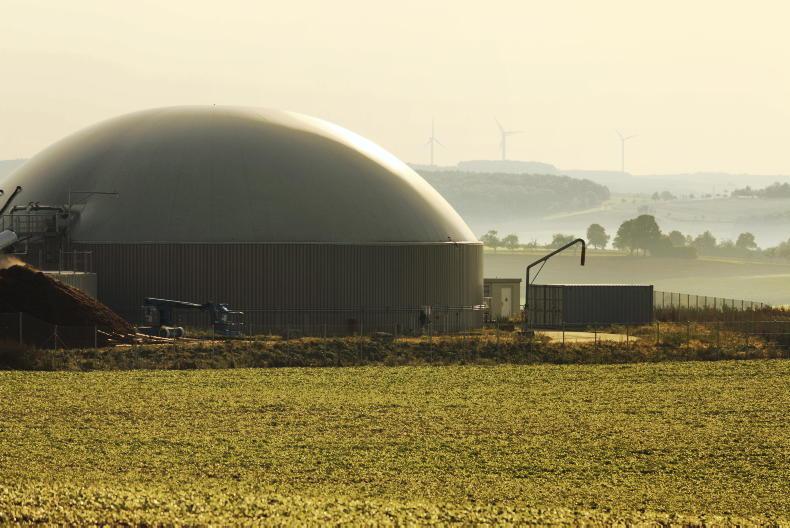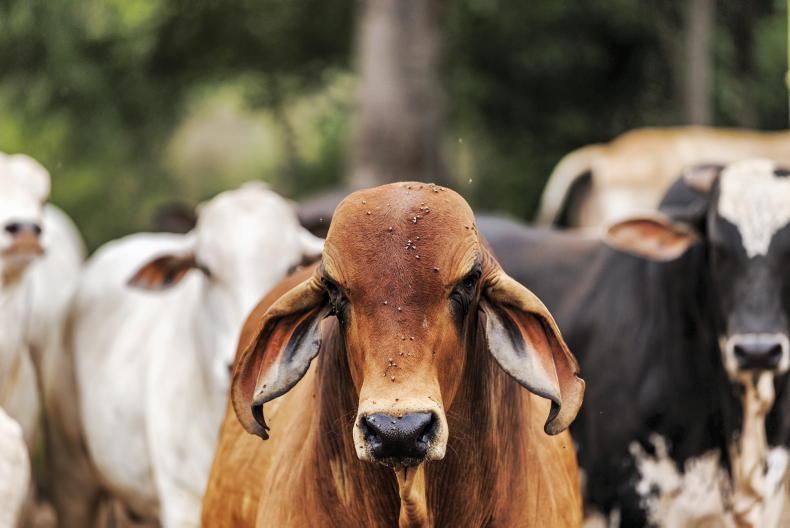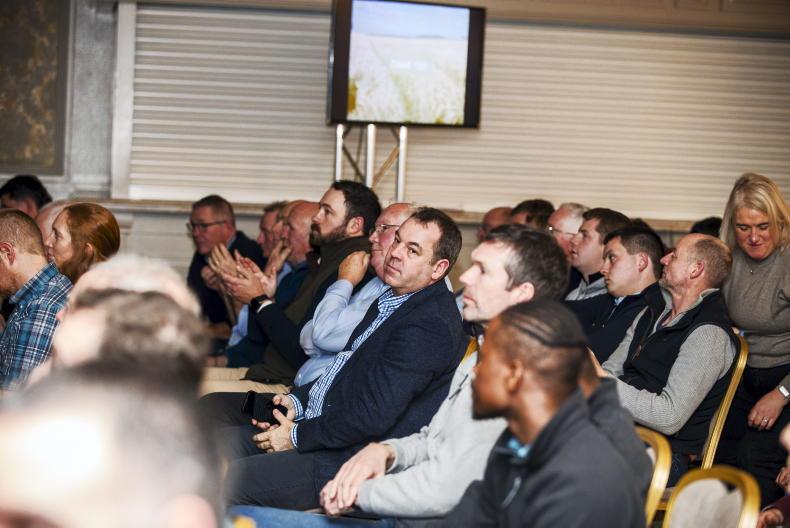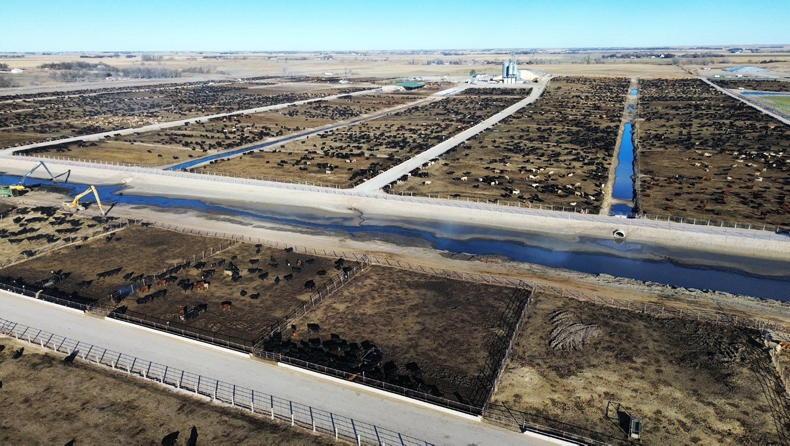Adam Woods this week outlined his view on where Irish Government policy is driving suckler cow numbers.
The inherent low profitability of the sector and availability of other options means some suckler farmers are rightly looking at alternatives.
The sooner the financial detail on a livestock reduction compensation scheme is decided, the better for everyone. Otherwise, indecision prevails.
Financial projections and profitability drive change on farm. We need a full economic appraisal of what different options will mean for farm incomes.
Nobody wants to see land abandonment but the current direction of policy could see large tracts of land in the west of Ireland with little activity.
Our Irish Farmers Journal survey shows over half of farmers are still unsure as to the implications of the new CAP that has just started. These changes are the most significant and far-reaching changes that directly affect farm income on most of our lowly stocked cattle and sheep farms. It is imperative farmers have time to consider options or at least don’t make any decisions without the knowledge of where the payment is going over the next five years. The decisions have been made, so find out now where your payment is going over the next five years. We have two CAP information meetings still to come, on 17 January in Ballina, Co Mayo, and 31 January in Mullingar, Co Westmeath.
Four decades
of change in crops
Andy Doyle this week charts the history of Irish crop production to show what needs to happen in the future. He is clear that the evolution of plant breeding is critical if crop production is to survive here.
The ask is that the EU provides the genetic tools to help optimise new technologies that can help make crop protection more sustainable in the face of ever-increasing production constraints.
When publishing the revised Climate Action Plan, the Government called for a bigger Irish tillage sector. This is much dependent on farmers getting access to land but also to a combination of technology and soil health measures to promote economic production.

\Donal O'Leary
If the Irish livestock breeding industry had its hands tied behind its back for the last 20 years, we would have a very different production system than we have today. Access to the best worldwide genetics and new genetic technology has allowed the Irish genetic base establish global prominence as world leaders.
I have no doubt if it didn’t evolve we would be looking at a much less competitive dairy sector, with cows on Irish farms lasting only two years in a herd, fed on imported feeds from all over the world.
Instead, the dairy sector is closer to holding milking cows for four and five years in a herd, fed on predominantly homegrown forages.
The dairy industry evolved and survived using the best tools available. The tillage sector needs a similar impetus to survive and thrive into the future.

In Northern Ireland (NI), there are over 90 anaerobic digestion (AD) plants, most of them established in the last five to six years. The Irish Government has a plan to develop 20 much bigger plants in southern Ireland over the next two years and a further 130-180 by 2030.
Stephen Robb this week looks at John McLenaghan’s AD plant development when he took the decision to get out of milking cows and use the crops from his farm for energy production. At that time, milk price was at a low point, which made the decision easier. Currently, milk price has never been as high. Will this slow change out of milking into AD or is AD an opportunity for other livestock sectors?
The model John uses to grow forage is not the relatively intensive use of artificial fertilisers that predominates in NI. He re-uses nutrient digestate from his AD plant to feed crop growth. The inherent sustainability of this, given the environmental challenges North and South, is a big positive for AD. Outlining the advantages of AD with clear financial projections and simple language is key to the success of the Irish Government’s AD ambitions. As it stands, however, there is no credible economic route to the development of the initial 20 plants, let alone the near 200 planned by 2030. With a typical lead-in time of three years to plan and develop a plant, the Government has already missed its 2025 target.
Adam Woods this week outlined his view on where Irish Government policy is driving suckler cow numbers.
The inherent low profitability of the sector and availability of other options means some suckler farmers are rightly looking at alternatives.
The sooner the financial detail on a livestock reduction compensation scheme is decided, the better for everyone. Otherwise, indecision prevails.
Financial projections and profitability drive change on farm. We need a full economic appraisal of what different options will mean for farm incomes.
Nobody wants to see land abandonment but the current direction of policy could see large tracts of land in the west of Ireland with little activity.
Our Irish Farmers Journal survey shows over half of farmers are still unsure as to the implications of the new CAP that has just started. These changes are the most significant and far-reaching changes that directly affect farm income on most of our lowly stocked cattle and sheep farms. It is imperative farmers have time to consider options or at least don’t make any decisions without the knowledge of where the payment is going over the next five years. The decisions have been made, so find out now where your payment is going over the next five years. We have two CAP information meetings still to come, on 17 January in Ballina, Co Mayo, and 31 January in Mullingar, Co Westmeath.
Four decades
of change in crops
Andy Doyle this week charts the history of Irish crop production to show what needs to happen in the future. He is clear that the evolution of plant breeding is critical if crop production is to survive here.
The ask is that the EU provides the genetic tools to help optimise new technologies that can help make crop protection more sustainable in the face of ever-increasing production constraints.
When publishing the revised Climate Action Plan, the Government called for a bigger Irish tillage sector. This is much dependent on farmers getting access to land but also to a combination of technology and soil health measures to promote economic production.

\Donal O'Leary
If the Irish livestock breeding industry had its hands tied behind its back for the last 20 years, we would have a very different production system than we have today. Access to the best worldwide genetics and new genetic technology has allowed the Irish genetic base establish global prominence as world leaders.
I have no doubt if it didn’t evolve we would be looking at a much less competitive dairy sector, with cows on Irish farms lasting only two years in a herd, fed on imported feeds from all over the world.
Instead, the dairy sector is closer to holding milking cows for four and five years in a herd, fed on predominantly homegrown forages.
The dairy industry evolved and survived using the best tools available. The tillage sector needs a similar impetus to survive and thrive into the future.

In Northern Ireland (NI), there are over 90 anaerobic digestion (AD) plants, most of them established in the last five to six years. The Irish Government has a plan to develop 20 much bigger plants in southern Ireland over the next two years and a further 130-180 by 2030.
Stephen Robb this week looks at John McLenaghan’s AD plant development when he took the decision to get out of milking cows and use the crops from his farm for energy production. At that time, milk price was at a low point, which made the decision easier. Currently, milk price has never been as high. Will this slow change out of milking into AD or is AD an opportunity for other livestock sectors?
The model John uses to grow forage is not the relatively intensive use of artificial fertilisers that predominates in NI. He re-uses nutrient digestate from his AD plant to feed crop growth. The inherent sustainability of this, given the environmental challenges North and South, is a big positive for AD. Outlining the advantages of AD with clear financial projections and simple language is key to the success of the Irish Government’s AD ambitions. As it stands, however, there is no credible economic route to the development of the initial 20 plants, let alone the near 200 planned by 2030. With a typical lead-in time of three years to plan and develop a plant, the Government has already missed its 2025 target.












SHARING OPTIONS